"Nothing is pleasant that is not spiced with variety." -- Francis Bacon
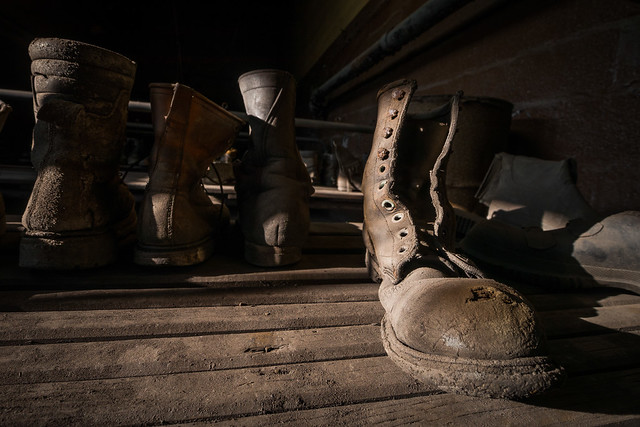
A Bunch of Heels, Talking Behind His Back (G5 & Oly 9-18mm @ 9mm, f/5.6, 1/125)
Originally published April, 2013
DISCLAIMER: I shoot in RAW, process in Adobe Lightroom, and even do HDR for some of these shots. The results shown here and this review in general are from the perspective of how I use the camera and not an attempt to do objective measurements.
However, the images shown in this review are an example of what this camera is capable of -- or at least what I can get out of it, lol!
This is a user experience review. I won't publish detailed specs or objective test results -- they can be found elsewhere. This is what I think of the camera as somebody who makes images with it.
Why a DMC-G5 if you already have an OM-D E-M5?
I got this camera because when shooting the occasional paying gig the E-PL5 can't cut it ergonomically for me. I also have an OM-D E-M5 that I dearly love. I needed a second body with good "realtime" ergonomics but I didn't want to commit any cash so the trade was a Godsend. I was able to trade the E-PL5 to someone even up for a G5 and two lenses.

Morning in the Garden (G5 & 7-14mm @ 7mm, f/4, 1/1600)
You can "click through" any photos in this post to my flickr where you can find full EXIF data if you are interested. The shots are pretty much all done with the G5 and one of three lenses: the "new" Panasonic 45-150mm, the Olympus 9-18mm, or the Panasonic 7-14mm.
But my overall view is I could shoot this thing every day without worrying -- in fact I have shot it for hours at a time now and found it very much a camera I can flow with and I'll recommend it -- though everyone is different.
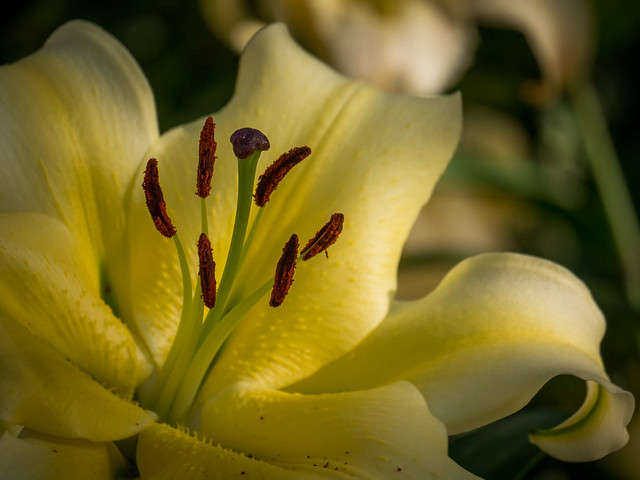
Shaded Lily (G5 & 45-150mm @ 150mm, f/5.6, 1/320)
There's a few things I want to talk about with the Panasonic DMC-G5 (hereafter referred to simply as "G5") and why I'm glad I have it as a complement to the Olympus OM-D E-M5. The title talks about the virtue of diversity and in fact the nature of this Panasonic body is superior to the E-M5 in some ways -- but not ALL ways and the E-M5 is still the "go to" camera for many things.
In particular, I'll talk about the "purple blob" problem some folks have noticed with the E-M5 ody. Don't know what that is? Read on!
But first, because this camera has been out for awhile and reviewed. Let me put up some pros and cons for those of you with little patience...

Top of the World! (G5 & Oly 9-18mm @ 9mm, f/5.6, 1/800)
Pros:
- First off, it does one thing I'm totally in love with. While you are in the EVF, you can have the touch screen swung out to the side and use your finger or thumb on it to move the AF focus point. Wow! This doesn't sound like much, but if you've ever sat there furiously working the 4 way controller to move the focus point, then you know this could be useful and it's really, really a nice feature to me. I know some previous G models have had this, but I had no idea about it.
- The said articulating touch screen. I've liked that since the G1 (my daughter has one which I've now taken and given her a G3) and it's a nice thing to have. All cameras should be able to do this, IMO.
- The overall picture quality and look is very nice. Close to if not equal to my E-M5 except for the details noted in the "cons" section below
- It feels great in the hand. I liked it instantly when I first held it.
- Enough controls and function buttons to satisfy me. Quite programmable if not as much so as the Oly -- but better in some ways.
- Four camera setup memories and two dial positions for them on the mode dial. C1 is C1. C2 is up to 3 programs you select from the touchsceen or four way pad on the back. Olympus: why don't you have this?
- Good enough bracketing for my use, but not great (see Cons below)
- Mode dial is very stiff -- won't walk on it's own (unlike the E-PL5!)
- Power on/off is via toggle.
- Viewfinder is great and works well with glasses and the cushion doesn't fall off in hard use! (Unlike E-M5, lol)
- Reasonably good low light performance, but you can't crank the shadows like you can on the E-M5.
- Okay but not blistering burst rate
- Battery life is better than suggested by specs, at least in my experience. I took 280 shots and was down only 1 segment and that was a lot of 5 shot HDR brackets with the LCD on all the time. Not bad to my mind. I shot for three straight hours and had juice left and I can live with that.
- The "toggle" by the shutter button functions as an exposure compensation adjustment which I love. There is an additional thumbwheel for adjustment as well which has a button built in (press the wheel).
- Dedicated movie button is hard to hit accidentally. Thank you.
- Same remote control input as other Panasonic cameras and it works with my two different models of Aputure wireless triggers fine.
- Customizable Quick Menu -- though never as good as Oly's SCP (Super Control Panel).
- Sensor is more resistant to flare generation with ultrawide lenses like the Panasonic 7-14mm -- the dreaded "Purple Blob" problem (more on that later).
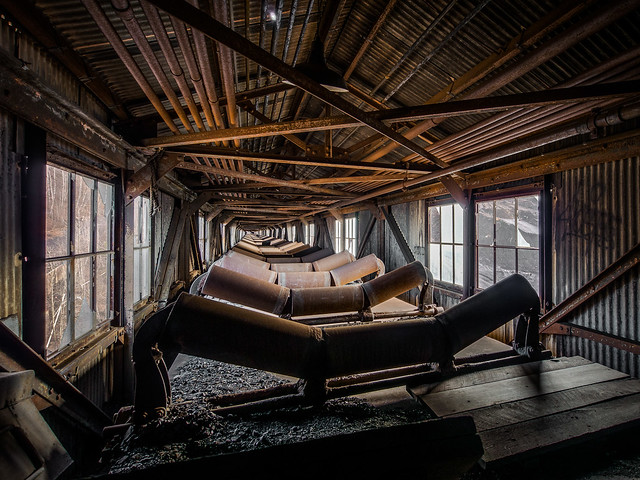
A Long Way Downstream (G5 & Oly 9-18mm @ 9mm, f/5.6, 0.4 sec)
Cons:
- No highlight/shadow limit indication in record view, only a histogram. This feature can be very useful and I miss it over the Oly as it allows easy ETTR exposure style when desired.
- Less dynamic range than the E-M5 and I think I can see that when I did a bunch of HDR brackets on an urbex shot with extreme lighting values. Brackets that I think would have been fine with the E-M5 had too much clipping on the G5. I think I need to shoot a wider bracket set to get the same performance for my photo realistic HDR.
- Bracketing mode has a maximum of 1 stop between adjacent frames. I wish it was more like the LX7 which has a two stop or even 3 stop option. This allows you to take fewer shots and to a good merge -- at least in my experience. The max the G5 does is a seven shot, 1 stop spacing bracket. I can get the same effect more quickly with the LX7 using 3 shot, 3 stop brackets -- or 3 shot 2 stop brackets to match the G5's 5 shot 1 stop mode. Overall, the LX7 is better here than the G5 and the G5 and E-M5 are about the same.
- Low light performance isn't "state of the art" like the Sony sensors though I would not call it bad. It's less than a stop off.
- Rear thumb dial is a bit off from where it maybe should be, but you get used to it. It's also got that same funny feel as the LX7 thumbwheel and it just isn't a "quality" or "positive" feel. It works fine, so this is just a minor complaint but in such a nicely ergonomic little body it stands out.
- Panasonic's Quick Menu is nothing like Oly's, although it can be customized to have just what you want in it so that's not too bad. Could be called a "Pro" actually.
- No IBIS. No Panasonics have in body image stabilization though so it's not a disappointment. In fact, I would not have gotten this camera in trade if it had IBIS, lol.
- The resistive touch screen technology uses more pressure to operate and feels less responsive. The Olympus touch screens are far superior. However, for menu navigation, moving focus points and so forth it is fine. The new G6 from Panasonic adopts the same capacitive touch screen technology as iPhones and the Olympus E-M5.
To Sum Up: My Judgement
Despite the long list of Cons I think this is a great camera which can do serious photography and can be amazingly responsive and chameleon-like in the hands of someone who takes the time to learn how to set it up. I feel the same way about the the E-M5 and LX7 and I think the G5 is a winner and not to be feared. It's not a dog and if you get one take the time to learn it and it will reward you with great photos.
Something else to think about: the G5 is starting to be heavily discounted and with the release of the DMC-G6 coming soon the price will drop even further and perhaps a few more used ones will turn up.
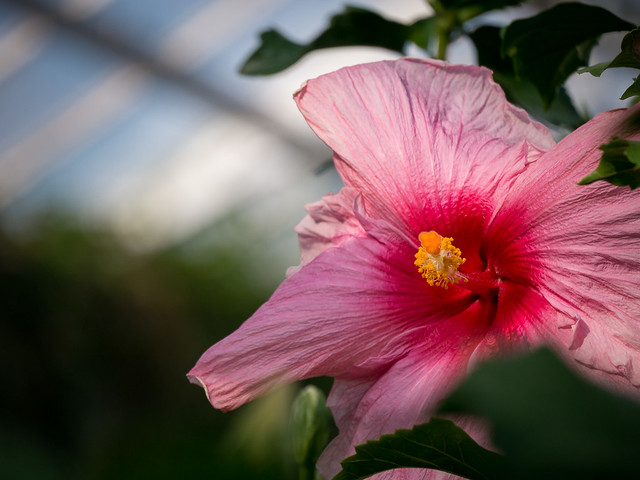
Red Hibiscus (G5 & 45-150mm @ 150mm, f/5.6, 1/500)
Diversity, Reuse, and Purple Blobs
I'll get to some examples of the problem, but first we'll talk a little bit about "partisanship".
All the "fanboys" for various brands out there aside, let's get something straight: there is no perfect technology or design. Period. Most things in life (including our own personalities, lol) can be either constructive or non-constructive depending on circumstances. The same is true of camera technologies.
I am not a brand partisan because photography for me is a means to make my art -- not something that exists for itself.
Panasonic is reusing the sensor from their DMC-GH2 now in a multiple designs. The GH2, the G5, and even the new G6 all use this sensor. It's a great sensor and if it doesn't "test" at the level of the Sony sensor in the E-M5 that doesn't change the facts. And it appears that some of the things Sony did to get performance out of the E-M5 sensor may have had some unintended consequences.
As sensor design improves, we see better noise performance out of smaller pixel dimensions. But sometimes this comes as a result of things external to the sensor electronics itself. In particular the Bayer array filters, IR/UV blocking filters, and the "microlenses" which focus the light onto the sensor pixel. It is reasonable to assume that Sony's latest developments include changes to these components.
The proof of this appears in some work done to verify that the "purple blob" problems seen on the E-M5 are due to reflections between the sensor and the lenses. Now this is nothing unusual -- but what is unusual is the magnitude of the problem. It's so bad it sometimes aggravates images in longer focal lengths that don't normally see the problem.
The folks who evaluated this phenomenon found that the Sony sensor reflects more and that the reflections in the near UV region are a particular problem. When they reflect back, they cause a heavy purple color after the demosaic process. It will usually only be apparent when there is a bright object many EV brighter than the average scene level. Such an object, particularly if it possesses any near UV light, seems to be a particular problem and this includes daylight and numerous modern artificial light sources.
Here are example images of what I mean taken with the same lens at the same location using the Olympus E-M5 and the Panasonic DMC-G5. These shots are not hosted on my flickr site so you can't click through them to larger images. The first image of each pair is the full view and the second a 100% crop of the spots.
Olympus E-M5 w/Panasonic 7-14mm Lens
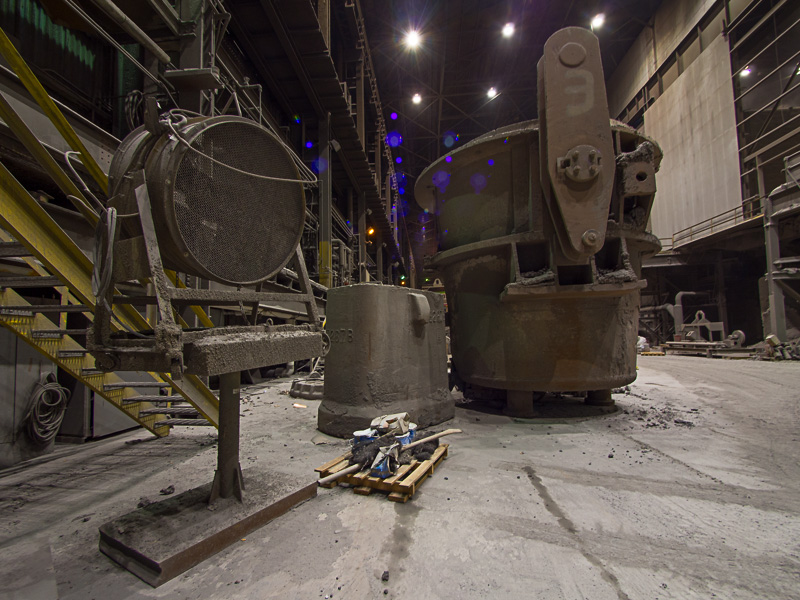
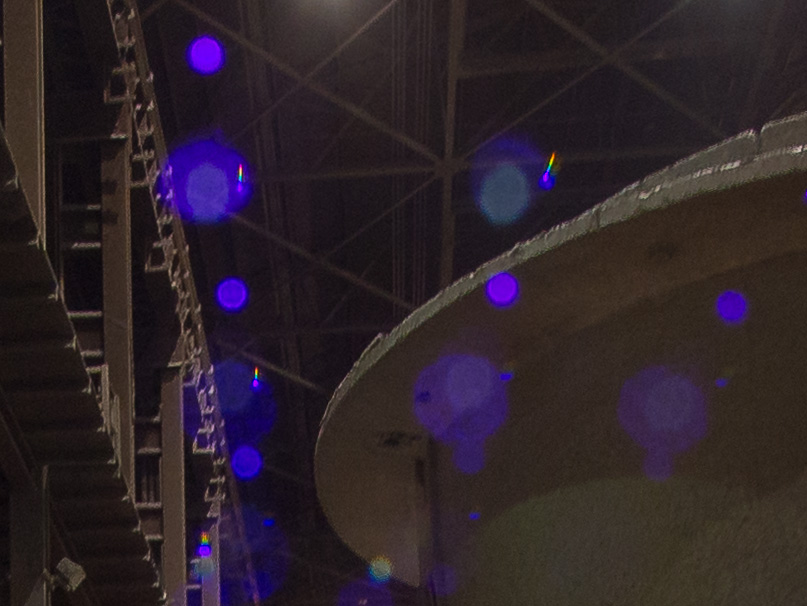
The problem is pretty obvious. But is it any worse than with a Panasonic sensor? Here's the Panasonic results below for comparison.
Panasonic G5 w/Panasonic 7-14mm Lens
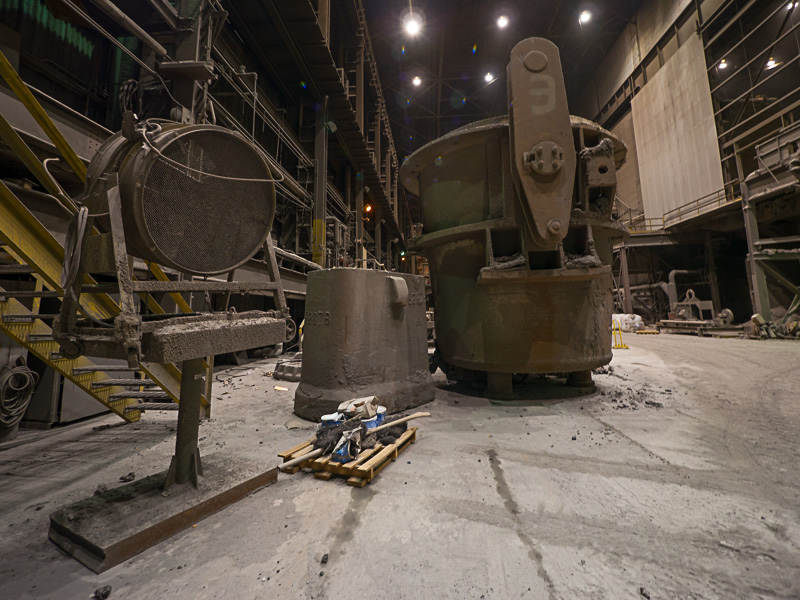
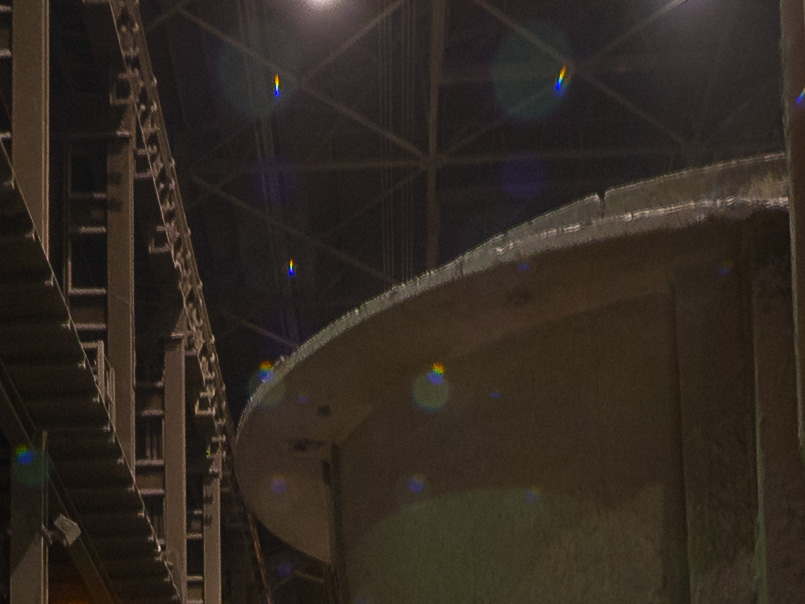
Comparing the Two Image Sets
You can see that both have reflected patterns of the overhead lights but the reflectivity and/or spectral sensitivity of the Panasonic is very different.
Now, before you go off blithely talking about "Panasonic in-camera corrections" you might want to think about it before you start spouting (as too many have).
Patterns of light reflections between sensor and lens are NOT lateral or longitudinal chromatic aberration nor distortion. The necessary "ray tracing" computing power to identify and correct the problem shown above simply doesn't exist at the camera level and would be very tough even in a very powerful computer. The problem exists at the level of the optical system and Panasonic's lesser manifestation is simply not Panasonic somehow "correcting" for it.
The conclusion is that the problem exists at the level it does in the Olympus E-M5 only because of the Sony sensor design. That purple blob issue has been documented with many lenses (including Olympus) under the right conditions though ultrawides are always more susceptible.

Misty Spring Beauty (G5 & 45-150mm @ 45mm, f/4, 1/100)
So Why Bother with an E-M5?
There are plenty of reasons to own either the G5 (or the new G6) and the E-M5. The E-M5 brings weather sealing, better dynamic range (about 1 stop), and slightly better low light performance to the equation. And the E-M5's IBIS (in body image stabilization) is simply unmatched and allows shooting static subjects handheld in very, very low light.
In addition the two cameras have a certain "look" to the images even processed from RAW. I like both for their own reasons but I find myself growing increasingly partial to the look from the Panasonic which I did not expect to.
But I'm not selling my E-M5. The G5 will do my ultrawide work and the E-M5 will do things where environmental sealing is critical, or where low light handheld work is required. If I shoot an event like a wedding I'll be wearing both of them with the G5 as the wide angle camera and the E-M5 as the telephoto camera.
Really, in my opinion if you select either camera you have the potential to do a lot of great photography. You can even do video which I've not covered here simply because I've not done much of it.

Agitator by Early Light (G5 & Oly 9-18mm @ 9mm, f/4, 2.5 secs)
The G5's iAuto Mode
So, you see this and you self-consciously say "Why would any self-respecting photographer use the iAuto mode?"
The answer is very simple: at times a camera like this simply is too hard to manipulate in real time -- picking focus point and so forth. You can have memorized setups for face-detect autofocus and so forth but the G5 has a little "iA" button that pops the camera in and out of iAuto mode quickly and it's worth thinking about. The G5 is GREAT for people photography on the fly. Particularly children.

Hi, Nana! (G5 in iAuto & 14-42mm "kit lens" @ 14mm, f/3.5, 1/320)
Children are always on the move. The above shot was an exercise in following the youngest grandchild around the back yard and grabbing shots. The G5 finds and locks faces fast even with the kit lens and I find the combination works better than when I try to manipulate the camera. I can press one button, shoot children, and pop back to whatever else I was doing.
I can catch a momentary look or expression like the one below.

Under the Holly Tree (G5 & 14-42mm "kit lens" @ 42mm, f/5.6, 1/80)
The G5 also honors your quality settings in iAuto and allows exposure compensation which some cameras do not. The shots above recorded as RAW despite switching to iAuto so I get the realtime advantages of a smart camera along with the post production capability of RAW shooting.
No matter whether you want "full control" or are a total noob you can get some great images out of this camera.
Some Additional Imagery
Here's a few more images taken with the Panasonic G5.
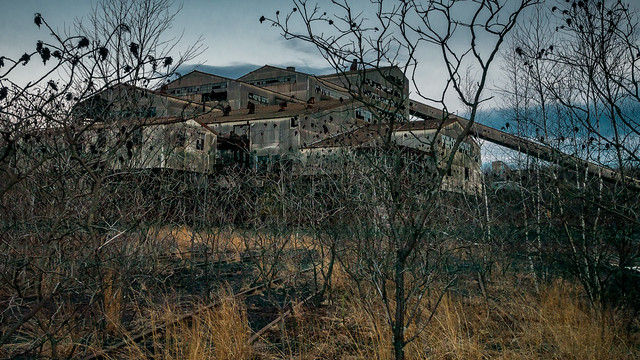
Breaker by Twilight (G5 & Oly 9-18mm @ 18mm, f/5.6, 1/50)
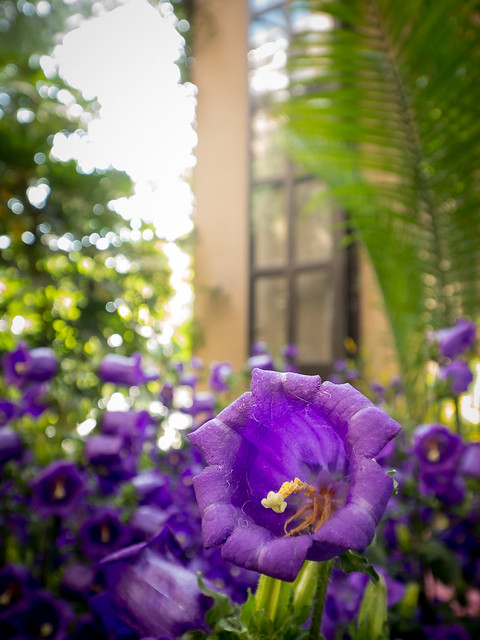
Purple Bell 1 (G5 & 7-14mm @ 14mm, f/4, 1/13)

Gear with Ethereal Glow (G5 & Oly 9-18mm @ 9mm, f/5.6, 13 secs)

Little Blue (G5 & 45-150mm @ 150mm, f/5.6, 1/500)
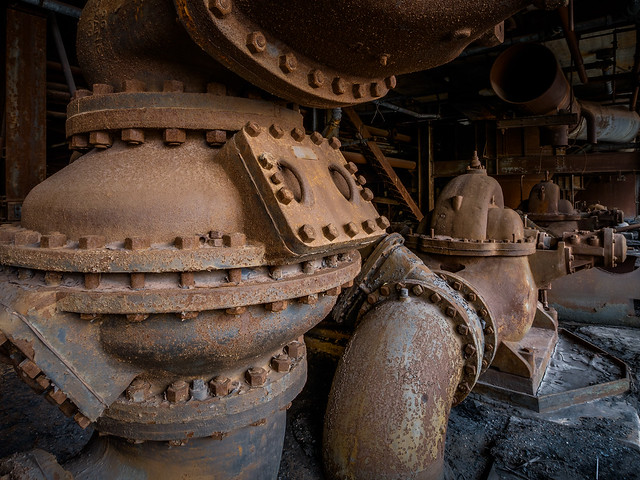
Steampunk Android Robot Prototype (G5 & Oly 9-18mm @ 9mm, f/8, 6 secs)

Queen Palm Halo (G5 & 7-14mm @ 7mm, f/4, 1/50)
“I shutter to think how many people are underexposed and lacking depth in this field.” – Rick Steves